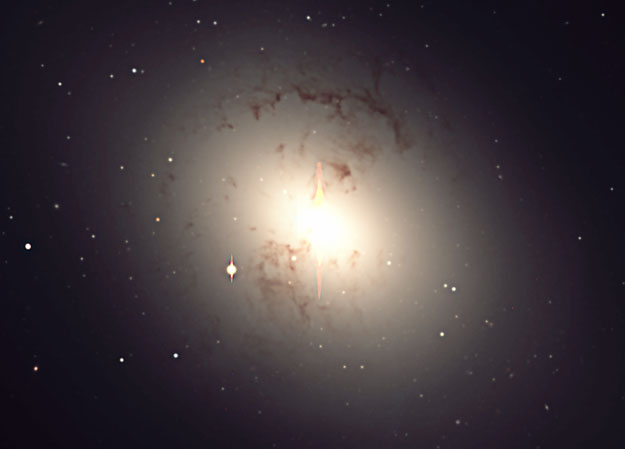
|
Explanation: Can unusual giant galaxy NGC 1316 help calibrate the universe? Quite possibly -- if it turns out this atypical galaxy is composed of typical stars. NGC 1316, pictured above, is most obviously strange because it has a size and shape common for an elliptical galaxy but dust lanes and a disk more commonly found in a spiral galaxy. These attributes could be caused by interactions with another galaxy over the past billion years. Most recently, NGC 1316 has been monitored to find novae, explosions emanating from white dwarf stars that should have a standard brightness. Again, NGC 1316 was found atypical in that the nova rate was unexpectedly high. If, however, the stars and white dwarfs that compose NGC 1316 are typical, then the novae observed should be just as bright as novae in other galaxies so that astronomers can use them to compute an accurate distance. This distance can then be used to calibrate other distance indicators and result in a more accurate scale for distances throughout the universe.
|
January February March April May June July August September October November December |
| ||||||||||||||||||||||||||||||||||||||||||||||||
NASA Web Site Statements, Warnings, and Disclaimers
NASA Official: Jay Norris. Specific rights apply.
A service of: LHEA at NASA / GSFC
& Michigan Tech. U.
Based on Astronomy Picture
Of the Day
Publications with keywords: unusual - nova - NGC 1316
Publications with words: unusual - nova - NGC 1316
See also:
